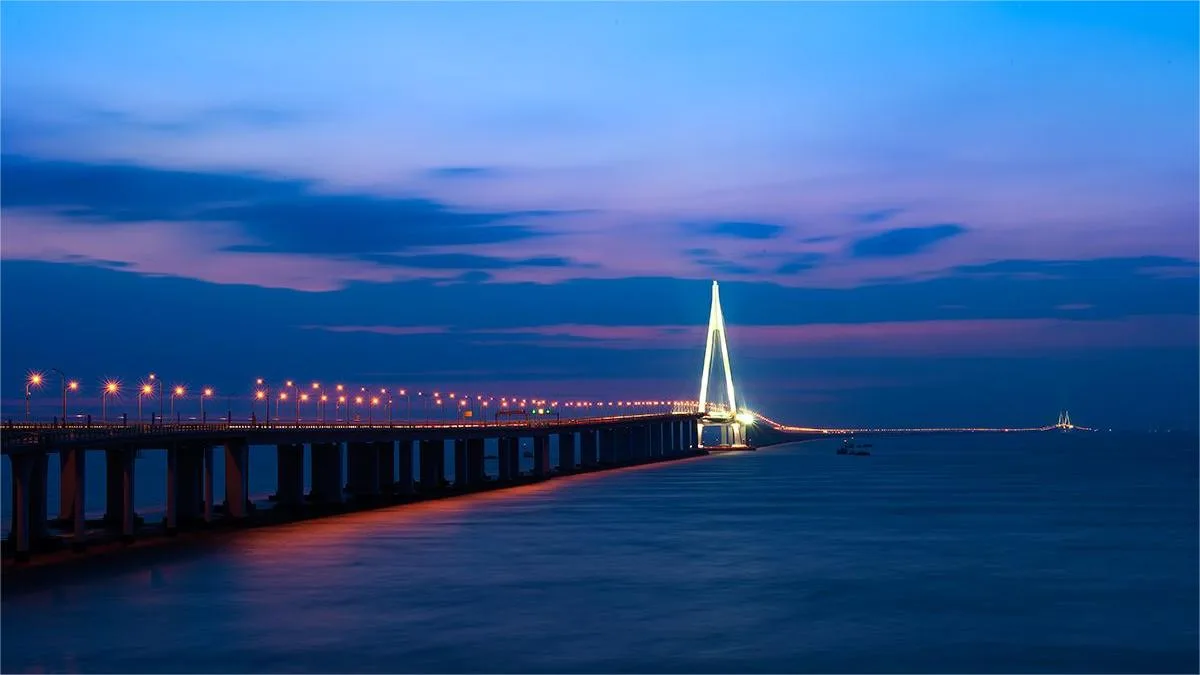The East Sea Grand Bridge (东海大桥), also known as the Donghai Bridge, is a remarkable sea-crossing bridge in China. It connects Nanhui New City in Pudong New Area, Shanghai, with Yangshan Town in Shengsi County, Zhoushan City, Zhejiang Province. Located within the deep-water port area of Yangshan in Hangzhou Bay, Zhejiang Province, this bridge is a critical infrastructure project in China.
Construction and Specifications
The construction of the East Sea Grand Bridge commenced on June 26, 2002. It was completed on May 25, 2005, when a ceremony marked its full connection. The bridge officially opened for traffic on December 10, 2005. Stretching from Luchao Port in Shanghai in the north to the Yangshan Deep-Water Port in Zhejiang Province in the south, the bridge spans a total length of 32.5 kilometers, with the main bridge section extending 25.3 kilometers.
Designed as a dual six-lane expressway, the bridge supports a speed limit of 80 kilometers per hour. The project, which cost a total of 7.11 billion RMB, was spearheaded by chief engineer Lin Yuanpei.
Design and Aesthetic
The East Sea Grand Bridge is conceptualized as the “East Sea Rainbow,” symbolizing a beautiful arc over the East China Sea. Its primary colors are white and light gray, chosen to harmonize with the surrounding environment, creating a visually appealing and unified aesthetic.
Engineering Challenges and Solutions
Constructing the East Sea Grand Bridge posed numerous engineering challenges. The project had to contend with the open sea environment, which included the impact of typhoons, monsoons, waves, and swells. Despite these difficulties, engineers and scientists overcame significant technical hurdles. They developed solutions for issues such as corrosion protection, the prefabrication and installation of massive concrete box girders, and the precise placement of piles using global satellite positioning systems.
Economic and Strategic Importance
The completion of the East Sea Grand Bridge holds significant economic implications for Shanghai and the broader Yangtze River Delta region. As the sole land link to the Yangshan Port, the bridge significantly reduces travel time from Pudong New Area to the port to just over 30 minutes. This enhanced connectivity has substantially boosted the throughput capacity of the Port of Shanghai, making it one of the busiest ports globally. At one point, the port’s throughput was second only to the Ningbo-Zhoushan Port in the world, with its container throughput ranking first globally.
The bridge’s construction symbolizes China’s transition from building bridges over rivers to constructing them over seas, marking a new era in the country’s bridge-building capabilities. The East Sea Grand Bridge has thus been instrumental in advancing Chinese bridge construction technology, serving as a model for future sea-crossing infrastructure projects.
Conclusion
The East Sea Grand Bridge is not just a monumental infrastructure project but also a testament to China’s engineering prowess and strategic foresight. It plays a crucial role in enhancing the logistical and economic landscape of the Yangtze River Delta, reinforcing Shanghai’s status as a global port city, and paving the way for future advancements in bridge construction technology. Its successful completion under challenging conditions stands as a landmark achievement in the realm of civil engineering.


